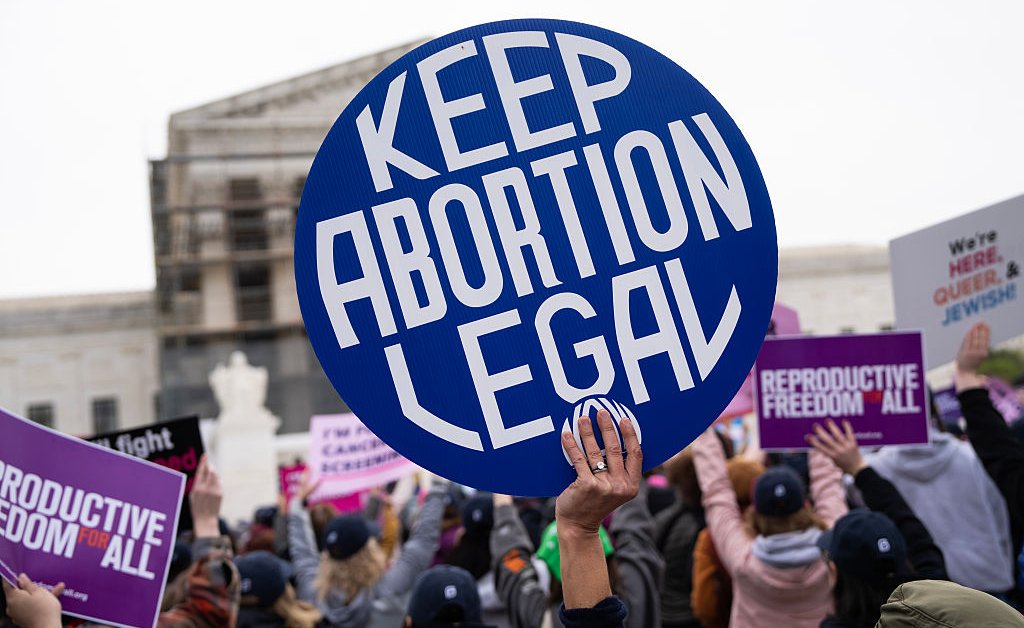Three years ago, when the U.S. Supreme Court decision in Dobbs v. Jackson Women’s Health Organization overturned nearly 50 years of constitutional protection for abortion, states became the last line of defense in the fight for reproductive freedom. As governors, we’ve stepped up to respond to this new national reality.
The Dobbs decision didn’t end abortion in America. Instead, it’s been rerouted to a few states now bearing the weight of a national need. States like ours—Illinois and New Mexico—have become what many call “surge states,” where Americans facing extreme abortion restrictions in neighboring states turn for abortion care in record numbers.
According to the Guttmacher Institute, last year, more than 155,000 Americans traveled out of state to access an abortion. Illinois has become the nation’s leading provider of out-of-state care, providing more than 35,000 abortions to patients. In New Mexico, more than 70% of all abortions were provided to out-of-state residents. This surge has major implications for both clinicians and patients, and we’ve done everything we can to rise to the challenge with urgency and purpose.
In 2024, the Chicago Abortion Fund received over 16,000 calls from people in 41 states — and didn’t turn a single person away. To alleviate the pressure on clinics and organizations, Illinois launched the Complex Abortion Regional Line for Access (CARLA), a provider-to-provider scheduling and triage system to coordinate care and reduce hospital strain, facilitating 898 patient referrals from individuals across 23 states. New Mexico is also investing millions to build brick-and-mortar reproductive health clinics along the Texas border—where nearly 8,000 patients traveled for abortion care in the past year—and bolster its health care provider workforce.
These are only a handful of the measures governors, clinics, and non-profit organizations have taken to ensure our states truly uphold reproductive freedom in a post-Dobbs America. But still, our systems are stretched. Even with public-private partnerships, clinics are full, providers increasingly fear for their safety, and care coordination grows more complex by the day.
Read More: Abortions Keep Increasing in the U.S., Data Show
In the meantime, anti-abortion forces are shifting their tactics to erode the infrastructure we’re building to keep legal abortion accessible through federal rollbacks that compound the strain on states trying to hold the line.
Just this month, the Trump administration rescinded Emergency Medical Treatment and Active Labor Act (EMTALA) guidelines that reaffirm federal protections for emergency abortion care when a patient’s health or life is at risk. This guidance helped hospitals understand how to treat pregnant patients facing life-threatening complications, even in states with bans. Despite the fact that access to this care continues to be guaranteed in the law, revoking these guidelines creates dangerous confusion about how to treat medical emergencies, prompting hospitals to either wrongfully deny care or send pregnant patients across state lines, even in critical condition. That burden falls not just on our health systems, but on patients who may not survive the delay.
Simultaneously, mifepristone—one of two medications used in medication abortion—is being politicized by the Food and Drug Administration (FDA), which is currently conducting a renewed review of its safety. This review follows years of coordinated attacks by anti-abortion activists who use junk science and political pressure to undermine public trust, despite mifepristone’s decades-long safety record, as documented in more than 100 peer-reviewed studies.
Medication abortion is a cornerstone of care, accounting for nearly two-thirds of all abortions in states without total bans. Losing access would require patients to rely on procedural abortions, necessitating more time, resources, and specialized care—further taxing our overburdened healthcare workforce and increasing wait times for patients who don’t have the time to spare.
We must recognize these attacks for what they are—a long-term strategy to chip away at reproductive rights across the U.S. If anti-abortion efforts targeting mifepristone and EMTALA succeed, the result won’t just be increased suffering in states with bans— it will also undermine access in states where abortion is protected, stressing systems that are already struggling to meet overwhelming need.
As “surge states,” we know our role in this moment. The future of reproductive freedom in America will continue to be determined by state leaders who are prepared to do everything in their power to defend it. That means prioritizing reproductive health care in our policy agendas, defending it in our budgets, and building resilient legal and clinical infrastructure that can withstand the threats ahead.
Dobbs didn’t end the war on reproductive freedom; it just redrew the battle lines.








